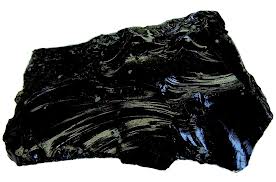RUBIES
For this week’s blog post, I would like to discuss Rubies! Rubies are my birth stones—as they are the birthstone for the month of July… so I figure I will take this opportunity to broaden my knowledge of them.
To begin, the distinguishing characteristic of a ruby is its beautiful red color—interestingly, this color is an expression of the high levels of chromium (The Nature of Rubies). This mineral attributes its name to this color—“the word ruby comes from the Latin ‘rubens’ which means red” (Ruby Facts). Rubies are part of the corundum mineral species (The Nature of Rubies).
In terms of mineral hardness, rubies are very strong—roughly a 9 on the Mohs hardness scale; “[t]hey are as resilient as sapphires and only slightly softer than diamonds” (Ruby Facts).
Moreover, some rubies have the capability to fluoresce red in daylight. Fluorescence can be defined as an objects ability to “emit visible light when it is exposed to radiant energy” (The Nature of Rubies). Burmese rubies —which usually form in marble material– tend to have this characteristic ability. On the other hand, “Thai and Cambodian rubies, which form within basaltic, iron-rich rocks, do not fluoresce” (The Nature of Rubies).
Another characteristic/property of rubies that I found to be intriguing was that of “asterism.” Asterism refers to the “reflective ‘star’ patterns formed by tiny silk inclusions in some cabochon sapphires and rubies; a six rayed ‘star’ is most often displayed in rubies, but a twelve-ray star can occur and is highly prized” (The Nature of Rubies).
Given that it is a precious gemstone and that it can be very prized, my next question was… where (geographically speaking) are these beautiful mineral found? After some research I found my answer: they have been found “all over the world, including in Myanmar (formerly Burma), Africa, Australia and the USA” (Ruby Facts).
As I continued my research, I read something I still find hard to believe. Since almost all rubies contain flaws, it makes sense that those without any imperfections would be extremely rare. BUT!!!—brace yourselves— a ruby that has absolutely no imperfections can be priced higher than diamonds of similar weight and quality! I never thought my birthstone was so impressive. Again, I have respect for yet another mineral.
A few additional questions arose in my mind as I was reading: where is the largest ruby? How big is it? “The world’s largest ruby is owned by a Chinese jewelry company. It weighs 8184 g (40920 Carat) and measures 5.11 x 5.43 x 5.70 inches” (Ruby Facts).
And lastly…. just to reinforce the fact that rubies are the most impressive gemstone of all (no bias, of course): rubies are often associated with themes concerning the “essence and vibrancy of life; if there is one gemstone that represents the passion of love, it is the ruby” (Ruby Facts).
Works Cited
“The Nature of Rubies.” The Natural Sapphire Company. Web. 15 Apr. 2013. .
“Ruby Facts: Interesting Information about Rubies.” Israel Diamonds: Forever Brilliant. Web. .



















